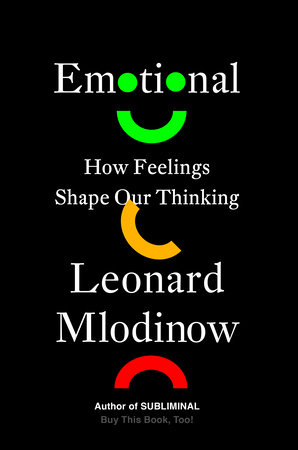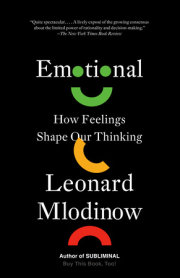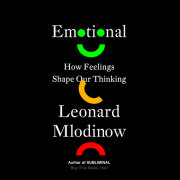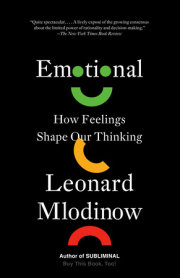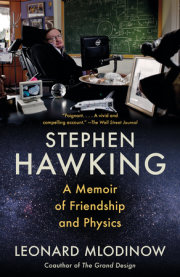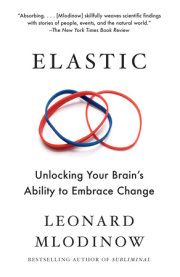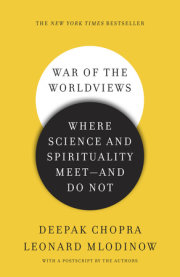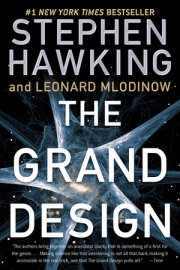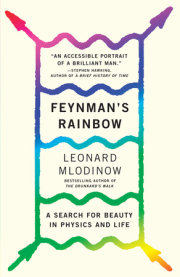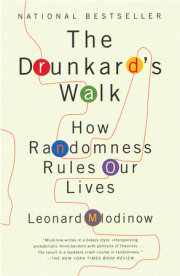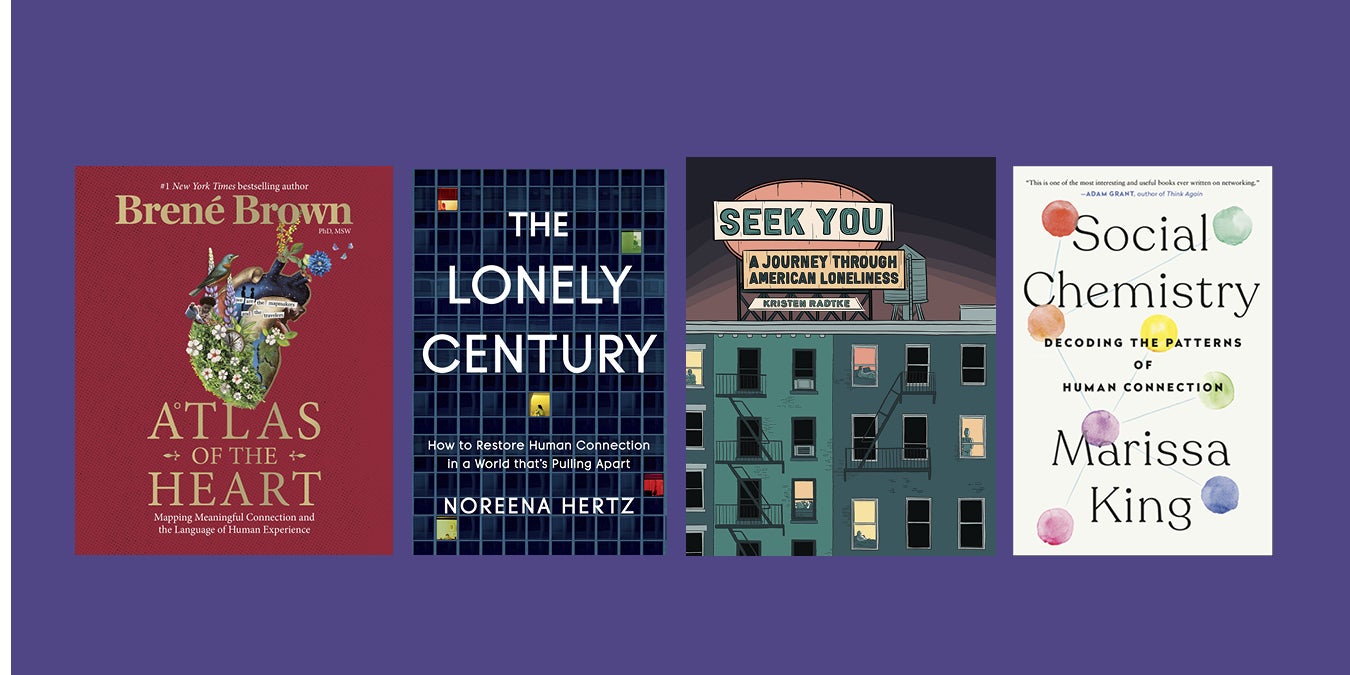Part I: What Is Emotion?
1
Thought Versus Feeling
On the morning of Halloween 2014, a strange aircraft ascended high into the skies above the barren Mojave Desert. The custom-built carbon-fiber plane was essentially twin cargo jets flying side by side, joined at the wing. Suspended from that monstrous carrier vessel was a smaller plane dubbed the Enterprise—an homage to Star Trek. The aim was for the cargo jet to carry the Enterprise to an altitude of fifty thousand feet, from where it would be dropped, briefly fire its engines, and then glide to a landing.
The planes belonged to Virgin Galactic, the company created by Richard Branson to carry “space tourists” into suborbital flight. By 2014, more than seven hundred spaceship tickets had been sold, at $200,000 to $250,000 each. This was the thirty-fifth such test flight but only the fourth in which the Enterprise was meant to fire up its rocket, which had just been redesigned to make it more powerful.
The ascent went well. The pilot David Mackay launched the Enterprise from the underside of his carrier plane at the appointed moment. Then his eyes panned across the sky, searching for the plume of the Enterprise’s rocket engine. He couldn’t spot it. “I remember looking down and thinking, ‘Well that’s strange,’ ” recalled Mackay, experienced enough to be wary of anything unexpected.1 But all was well. Out of his line of sight, the spaceship had indeed fired its rocket and in about ten seconds accelerated through the sound barrier. The mission was unfolding without incident.
The Enterprise was captained by a test pilot named Peter Siebold, with almost thirty years of flying experience. His co-pilot, Michael Alsbury, had previously worked with eight different experimental aircraft. In some ways, the two men were quite different: while Siebold could strike co-workers as aloof, Alsbury was always friendly and known for his sense of humor. But strapped into their seats atop the rocket, they functioned as a unit, each of their lives dependent on the actions of the other.
Just before reaching the speed of sound, Alsbury unlocked the ship’s air-braking device. The brake was crucial for controlling the spaceship’s orientation and speed while dropping back to earth, but it wouldn’t be needed for another fourteen seconds, and Alsbury had unlocked it before he should have. The National Transportation Safety Board would later criticize the Scaled Composites unit of Northrop Grumman, which designed the vehicle for Virgin, because it did not guard against such human slipups by providing a fail-safe system to prevent premature unlocking.
Unlike Virgin Galactic, government-sponsored space initiatives call for “two-failure tolerance.” That means putting in place safeguards to protect against two separate and unrelated simultaneous problems—two human errors, two mechanical errors, or one of each. The Virgin team was confident that its extraordinarily well-trained test pilots wouldn’t make such mistakes, and eliminating safeguards had certain advantages. “We don’t have all the constraints a government organization like NASA would,” one team member told me. “So we can get things done a lot faster.”2 But on that Halloween morning, the lock disengagement was no harmless mistake.
With the lock off prematurely, the force of the atmosphere caused the brake to deploy early, even though Alsbury never threw the second switch to deploy it. As the brake swung into position, the still-firing rocket placed tremendous stress on the plane’s fuselage. Four seconds later, traveling at 920 miles per hour, the ship ripped apart. From the ground, it looked like a massive explosion.
Siebold, still attached to his ejection seat, was thrown from the plane. Traveling faster than sound, he was in an atmosphere where the temperature of the air around him was minus seventy degrees Fahrenheit, and there was just one-tenth the oxygen present at sea level. Still, he somehow managed to unbuckle himself, after which his parachute automatically opened. Upon rescue, he had no memory of the experience. Alsbury wasn’t so lucky. He died instantly when the plane broke apart.
Emotions and Thought
The long string of well-rehearsed procedures called for when a pilot tests a new plane are normally executed so smoothly that it’s easy to think of them as rote and mechanical. But that view is profoundly misguided. When the Enterprise was dropped from its mother ship and started to fire its ferocious rocket engine—as planned—the physical circumstance of its pilots was suddenly disrupted. It’s hard to imagine what that felt like, but a rocket is really a controlled exploding bomb, and a controlled explosion is still an explosion. It’s a terribly violent event, and the Enterprise was relatively flimsy—a mere twenty thousand pounds, loaded, as compared with the space shuttle’s four million. And so the ride is much different. If flying in the space shuttle is like racing down the highway in a Cadillac, piloting the Enterprise was like driving 150 miles per hour in a go-kart. The souped-up rocket’s firing subjected the Enterprise pilots to a colossal roar, savage shaking and vibration, and fierce stresses of acceleration.
Why did Alsbury throw the switch when he did? The flight was proceeding as planned, so it’s not likely he was panicking. We can’t know what his reasoning was, nor perhaps did he. But in the anxious state that comes from a highly stressful physical environment, we process data in a manner that is hard to predict from practice runs in flight simulators. This was more or less the conclusion of the National Transportation Safety Board about the events on the Enterprise. Speculating that Alsbury, lacking recent flight experience, might have been unusually stressed, the NTSB posited that he committed the misjudgment due to the anxiety caused by time pressure and the ship’s strong vibration and forces of acceleration, which he hadn’t experienced since his last test flight eighteen months earlier.
The story of the Enterprise illustrates how anxiety can lead to a bad decision, as it surely sometimes does. In our ancestral environment, there were many more life-threatening dangers than we typically face in civilized life, and so our fear and anxiety reactions, in particular, may at times seem overblown. Such cases, as exemplified by the Enterprise saga, are what, over the centuries, gave emotion a bad name.
But stories of emotions causing problems are often sensational, as this one was, while tales of emotions operating as they should tend to be mundane. It is the malfunctions that stand out in the telling, while a properly functioning system can easily go unheralded. There were, for example, thirty-four successful prior test flights of the Enterprise. In each of those, both the plane and its pilots operated as planned, controlled by a miraculous marriage of modern technology and the smooth interplay of the rational and emotional human brain, and none of them made the news.
A case that hit closer to home for me concerned a friend who lost his job, and therefore his health insurance. Knowing the cost of decent medical care, he became anxious about his health. What if he got sick? He could go broke. That anxiety affected his thinking—if he had a sore throat, he didn’t ignore it or dismiss it as sniffles as he’d have previously done. Instead, he’d fear the worst: Was it throat cancer? As it turned out, his anxiety over his health saved his life. For one of the things he had never paid attention to, but now began to worry about, was a mole on his back. For the first time in his life, he went to a dermatologist and had it checked out. It was an early-stage cancer. He had it removed, and it never recurred—a man rescued by anxiety.
The moral of this pair of stories is not that emotions help or impede effective thinking but rather that emotions affect thinking: our emotional state influences our mental calculations as much as the objective data or circumstances we are pondering. As we’ll see, that is usually for the best. It is the exception and not the rule when the effect of emotion proves counterproductive. In fact, as we explore the purpose of emotion in this and the next several chapters, we’ll see that, indeed, if we were “free” from all emotion, we would hardly be able to function because our brains would have to be hopelessly cluttered with rules governing the simple decisions we must constantly make to react to the everyday circumstances of life. But for now, let’s focus, not on the detriments or benefits of emotion, but on emotion’s role in the way our brains analyze information.
Emotion states play a fundamental role in the biological information processing of all creatures, in mammals as well as simple insects, and in the actions they take as a result. In fact, the very process that went awry in the Enterprise disaster was mirrored in a controlled experiment in which honeybees were put into an extreme situation eerily parallel to that of the Virgin pilots.3 The researchers in that study were interested in how such simple creatures might respond to being in a chaotic and dangerous situation, and so they subjected them to sixty seconds of high-speed shaking.
How do you subject bees to “high-speed shaking”? After all, if you simply capture bees in a vessel and shake it, they can hover inside so what you’ll have is bees flying around a shaking jar, not bees that themselves are shaken. To circumvent such issues, these researchers immobilized the bees by strapping them into tiny bee harnesses, adding to the similarity of their plight to that of the Virgin pilots, who were also securely strapped down and immobilized as their vessel violently quaked. In the case of the bees, the harnesses were made from a small length of a plastic straw or other tubing, cut in half along its length. Each bee was cooled down to become briefly inactive as it was laid inside the half tube and secured with duct tape.
After the shaking, the scientists tested the bees’ decision making. They presented them with a task that required them to discriminate between various odors they had previously been exposed to. In those prior exposures, the bees had learned which odors signaled a pleasant treat (a sucrose solution) and which denoted an unpleasant liquid (quinine). Now, after being shaken, each bee was again presented with fluids to sample. The bees were put in a position in which they could choose, based on the odor associations they had learned earlier, whether to drink each sample or pass it up.
But these post-shaking samples were not purely pleasant or unpleasant; they were two-to-one mixtures, either predominantly pleasant sucrose or mostly the unpleasant quinine. The two-to-one sucrose-quinine mixture was still pleasant to the bees, and the two-to-one quinine-sucrose still unpleasant, but now the odors were ambiguous. A bee, when presented with each mixed sample, had to decide whether the ambiguous smell signaled a pleasant treat or an unpleasant surprise. The scientists were interested in the question, would the prior shaking affect the bees’ assessments of the odors, and if so, how?
Anxiety in bees, as in humans, is a reaction to what affective neuroscientists call a “punishing” environment. In the case of the Enterprise and the bees, that needs no explanation, but more generally it means a circumstance in which a threat to comfort or survival might reasonably be expected.
Thinking in an anxious state, scientists have found, leads to a pessimistic cognitive bias; when an anxious brain processes ambiguous information, it tends to choose the more pessimistic from among the likely interpretations. Your brain becomes overactive in perceiving threats and tends to predict dire outcomes when faced with uncertainty. It’s easy to understand why brains might be designed that way; being in a punishing environment, one would be wise to interpret ambiguous data as being more threatening, or less desirable, than one might if the surroundings were safe and pleasant.
That pessimistic bias in judgment is just what the scientists found. The shaken bees passed up the two-to-one sucrose-quinine solution significantly more often than a control group that had not been shaken: the shaking had influenced the bees to interpret the ambiguous smell as signaling an undesirable liquid. One might be tempted to describe the scientists’ result by saying that the shaken bees made more “mistakes” than the control group. That would fit the “emotions impede good decision making” narrative, but this controlled experiment makes it clear that what was really going on was a reasonable threat-justified shift in the bees’ judgment.
The shaking-induced anxiety had to also affect the judgment of the Enterprise pilots. People, like bees, get anxious when they experience turbulence in their external world, and it affects their information processing in a similar way. That’s even true physiologically; anxious bees have lower levels of the neurotransmitter hormones dopamine and serotonin in their hemolymph (bee blood), just as humans do when under anxiety.
“We show that the bees’ response to a negatively valenced event has more in common with that of vertebrates than previously thought,” the researchers wrote. “[This] suggests that honeybees could be regarded as exhibiting emotions.” Though the scientists were saying that the behavior of bees reminded them of the behavior of people, to me the conditions of the pilots—being vibrated and shaken—reminded me of the bees. On some deep level of existence, we and bees have a surprising and revealing commonality with regard to the way we process information: it is not just a “rational” exercise; it is deeply intertwined with emotion.
Affective neuroscience tells us that biological information processing cannot be divorced from emotion, nor should it be. In humans, that means that emotion is not at war with rational thought but rather a tool of it. As we’ll see in the chapters that follow, in the thinking and decision making in endeavors ranging from boxing to physics to Wall Street, emotions are a crucial element of success.
Outgrowing Plato
Because our mental processes are so mysterious, their nature has occupied thinkers since long before we even understood that the brain is an organ. One of the first and most influential to contemplate them was Plato. He envisioned the soul as a chariot pulled by two winged horses guided by a charioteer. One horse was a “crooked lumbering animal . . . of a dark color, with grey eyes and blood-red complexion . . . hardly yielding to whip and spur.” The other was “upright and cleanly made . . . a lover of honor . . . and the follower of true glory; he needs no touch of the whip, but is guided by word and admonition only.”
Much of what we talk about when we speak of how emotion motivates behavior is illustrated by Plato’s chariot. The dark horse stands for our primitive appetites—for food, drink, sex. The other horse symbolizes our higher nature, our emotional drive to achieve goals and accomplish great things. The charioteer represents the rational mind, trying to harness both horses for its own purposes.
In Plato’s view, a competent charioteer would work with the white horse to restrain the dark horse and train them both to keep moving upward. Plato believed that the deft charioteer also listens to the desires of both horses and works to channel their energy and achieve harmony between them. In Plato’s thinking the task of the rational mind is to take stock of and control our drives and desires and, in light of our goals, to choose the best course. Although we now know that it’s misguided, that division between the rational and the nonrational mind became one of the main themes of Western civilization.
Though Plato saw our emotions and rationality working harmoniously, in the centuries after Plato those two aspects of our mental life came to be seen as working in opposition to each other. Reason was viewed as superior and even holy. Emotions were to be avoided or contained. Later Christian philosophers accepted that view in part. They grouped human appetites, lusts, and passions as sins a virtuous soul should seek to avoid, but identified love and compassion as virtues.
The term “emotion” grew out of the work of Thomas Willis, a seventeenth-century London doctor. He was also an enthusiastic anatomist, and if you died under his care, there was a fair chance he would dissect you. In situations of life or death, it couldn’t have been comforting to know that your doctor wins either way. But Willis also had another source of cadavers: he had obtained permission from King Charles I to perform autopsies on hanged criminals.4
In the course of his research, Willis identified and named many of the brain structures that we still study today. More important, he found that the deviant behaviors of many criminals could be traced to specific features of those structures. Later physiologists built upon Willis’s work to examine reflexive responses in animals. They found that expressions such as the recoil of fright come from purely mechanical processes governed by nerves and muscles; they involved some sort of motion. Soon the word “emotion,” derived from the Latin movere, “to move,” appeared in both English and French forms.
It took a couple centuries to get the “motion” out of “emotion.” The modern use of the term first appeared in a set of lectures published in 1820 by an Edinburgh professor of moral philosophy named Thomas Brown. The book of lectures was wildly popular and went through twenty editions over the following several decades.5 Thanks to John Gibson Lockhart, who was Sir Walter Scott’s son-in-law, we have some idea of what the scene was like when Brown delivered these lectures: Lockhart included an account of one in a fictionalized portrait he wrote describing Edinburgh society. In it, Brown arrives “with a pleasant smile upon his face, arrayed in a black Geneva cloak over a snuff-coloured coat and a buff waistcoat,” his manner of speaking “distinct and elegant,” his ideas enlivened by quotations from the poets.
In his lectures Brown proposed a systematic study of emotion. While an excellent idea, it faced immense hurdles. This was an era in which Auguste Comte, sometimes called the first philosopher of science, examined each of the six “fundamental” sciences—mathematics, astronomy, physics, chemistry, biology, and sociology—but did not include psychology. And for good reason: while John Dalton was discovering the basic laws of chemistry, and Michael Faraday the principles of electricity and magnetism, there wasn’t yet a fundamental science of the mind. Brown had wanted to change that. Redefining emotion as “all that is understood by feelings, states of feelings, pleasures, passions, sentiments, affections,” he grouped emotions into categories and proposed that they be studied scientifically.
Brown had many great traits as a philosopher-scientist, but staying alive was not one of them. He collapsed while lecturing in December 1819. His doctor examined him and then sent him to London for a “change of air.” He died there on April 2, 1820, shortly before his book came out. He was forty-two. Though Brown never knew the impact of his ideas, his lectures guided scholars’ thinking about emotion for years to come. Today he is a little-known figure, his grave in a state of disrepair. But for decades after his death he was well celebrated for his insights into the human mind.
The next great leap in the study of emotion came from Charles Darwin, who started to ponder the topic upon returning from his voyage on the Beagle in 1836. Darwin hadn’t always been interested in emotion, but as he began to create his theory of evolution, he scrutinized all aspects of life to try to understand how they fit into his puzzle. Emotion was one he had trouble with. If, as was then generally accepted, emotions were counterproductive, why would they have evolved? Today we know they are not counterproductive, but to Darwin the quandary was a test for natural selection. How do these apparently disadvantageous emotions fit into animal behavior? Despite the dearth of prior work in the field, Darwin was determined to find the answer. It took him decades to formulate his explanation.
Emotions and Evolution
Some of the most detailed studies Darwin performed were on nonhuman animals because the function of an emotion is often clearer in simpler organisms. Anxiety, for example, plays a complex and shifting role in our lives that is far different from its role in the natural world from which we evolved, but its constructive role in the animal world is more straightforward and easy to read. Take the ruddy duck, for example.
Because evolution depends upon successful mating, the genitals of every species are adapted to meet the particular circumstances it faces. In the case of the ruddy duck, the female genitals evolved to inhibit access to undesirable males, preventing impregnation unless the female assumes a posture that enables the male to penetrate fully. That allows the female to be selective about whom she mates with. The males, of course, evolved in response.
During the summer male ruddy ducks have dull plumage, similar to that of the female, which makes them inconspicuous to predators. But as the winter mating season approaches, they temporarily don the ruddy duck equivalent of a Rolex watch and gold necklace—their feathers take on a rich chestnut hue and their bill turns a bright blue—advertising themselves to the picky females. In addition to flaunting their duck bling, they perform unusual courtship displays in which they stick their tails straight up while striking their beaks against their inflated necks. The ducks’ bright plumage and beaks are riskier than their off-season camouflage, but maybe that’s the point: it sends females a message of physical prowess, that the individual is fit enough it needn’t fear being noticed.
The system works pretty well, but there is one more necessary adjustment. Because the female genitals are difficult to access, to successfully mate the male genital needs to be extra-long—sometimes as long as the creature’s body itself. Because a genital like that is difficult to lug around, like the bright feathers it is shed when the time to mate is over and then regrown each year.
So far as we know, the ruddy ducks have no anxiety about this annual shedding of their penises, but what they do have anxiety about is the threat of violence. Male ruddy ducks can be bullies, with larger ducks bullying the smaller ones. The frequency of physical conflict is diminished, however, because anxiety about being attacked spurs the weaker ones to shed their colored plumage more quickly and to grow a far tinier sex organ. That has the effect of making them less of a competitive threat at mating time and therefore less of a target for aggression. This social dynamic plays an evolutionary role similar to the establishment of dominance hierarchies in primates and other social animals: it allows for the resolution of conflict without costly fighting that can result in serious injury or death and serves to maintain order among pack members.
No one knows to what extent the ducks consciously “feel” the emotion of anxiety, but scientists can measure the biochemical changes within their bodies that result from it. The research journal Nature summed this all up in a headline, “Sexual Competition Among Ducks Wreaks Havoc on Penis Size.”6 By effectively ceding the choice of mate to the more powerful and minimizing the potential for wasteful violence, that “havoc” confers an evolutionary benefit on the species. At least in this instance, anxiety’s positive role in the dance of evolution is clear.
The evolutionary roles of many human emotions are also fairly clear. Consider the feelings we have about that by-product of mating that we call babies. About two million years ago our ancestor Homo erectus evolved a much larger skull, which allowed for expansion of the frontal, temporal, and parietal lobes of the brain. That gave us, like a new smartphone model, a great boost in our computing power. But it also caused problems, because, unlike a smartphone, a brand-new human has to slide down the birth canal of an older human, and it has to be supported by the mother’s own metabolic activity until that blissful moment. As a result of such challenges, human babies make their exit earlier than is normal for primates—a human pregnancy would have to last eighteen months to allow the brain of a human child to be as developed as that of a chimpanzee when it is born, by which time the baby would be too large to exit the birth canal. The earlier exit solves some problems, but it causes others. Because the human brain at birth is not very well developed (only 25 percent of adult size, as opposed to 40–50 percent for an infant chimp), human parents are burdened with a child who will remain helpless for many years—about twice as many years as a baby chimp.7
Caring for that helpless child is a major life challenge. Not long ago, I had lunch with a friend who had, at the birth of his child fifteen months earlier, become a stay-at-home dad. My friend had played college football and later been the CEO of a start-up company. Neither of those challenges wore him down. But at our recent lunch he was sullen, tired, hunched over with a sore back, and limping. In other words, on him, stay-at-home fatherhood had had the same effect as a mild case of polio.
My friend is not atypical. Human children require an enormous amount of care. The job of providing that care is one of the least appreciated professions in Western society, but it takes its toll. Before their first child is born, some people think having a child will be one big party. What they don’t realize is that with that big party comes a hangover—their duties as the child’s cleanup crew, caterer, and security guard.
Why do we get up three times a night to feed our kids? Why do we take pains to wipe up their poop, and remind ourselves to lock the cabinet that contains the silver polish that looks like a bottle of Gatorade? Evolution has provided a motivating emotion for all that work: parental love.
Each of our emotions, when it occurs, alters our thinking in a manner that fulfills some evolutionary purpose. Our parental love is as surely a cog in the machine of human life as is mating anxiety in the life of the ruddy duck. That we love our children because evolution has manipulated us to do so doesn’t diminish that love. It merely reveals the origin of that gift that so enriches our lives.
Darwin, trying to puzzle out the role of emotion, didn’t have access to the background knowledge and technologies we do today, and he never studied the ruddy duck (they are native to North America). But he did study in great detail the plumage, skeleton, bills, legs, wings, and behavior of numerous other wild ducks. He also interviewed pigeon and livestock breeders. And he examined an ape, an orangutan, and monkeys in the London Zoo.
Believing that he could glean insight into the purpose of emotions by focusing on the outward signs—those muscle movements and configurations, especially in the face, that had inspired the coining of the term itself—he took copious notes on animals’ seeming humanlike expressions of feeling. He became convinced that animals “are excited by the same emotions as ourselves” and that the outward signs of emotion served to communicate those feelings, enabling a kind of mind reading among animals that lacked the capacity for language.8 Dogs might not cry at the end of Romeo and Juliet, but in his dog’s gaze Darwin believed he saw the emotion of love.
Darwin studied emotions in humans, too, again concentrating on their physical manifestation. He circulated a questionnaire among missionaries and explorers across the world, asking about emotional expression in different ethnic groups. He examined hundreds of emotional photographs of actors and babies. He documented the smiles and frowns of his own infant son, William. His observations led him to believe that each emotion yields a characteristic and consistent expression across all human cultures—just as he’d observed across varying species of other mammals. Smiles, frowns, eye widening, our hair standing on end, Darwin believed, all derive from physical displays that proved useful in the earlier stages of our species’ evolution. For example, when it faces an aggressive rival, a baboon snarls to signal its readiness to fight. A wolf can also snarl or send the opposite message by rolling submissively on its back to telegraph willingness to back down.
Darwin concluded that our various emotions were passed down to us from ancient animal ancestors in whose lives each emotion played a specific and necessary role. That was a revolutionary idea, a profound departure from the pervasive millennia-old view that emotions are fundamentally counterproductive.
Yet Darwin also believed that sometime in the course of our evolution we humans developed a superior method of information processing—our rational mind, a “noble” and “god-like intellect” that could override our irrational emotions—and so he wrongly believed that emotions had ceased to have a constructive function.9 Our emotions, in Darwin’s view, were mere remnants of a previous stage of development, like our tailbone or appendix—useless, counterproductive, at times even dangerous.
The Traditional View of Emotion
Darwin finally published his conclusions in his 1872 book, The Expression of the Emotions in Man and Animals. It became the most influential work on emotion since Plato and, in the century that followed, inspired the theory of emotion—the “traditional” theory—that until recently dominated our ideas about the subject. The fundamental tenets of the traditional theory were that there are a handful of basic emotions shared by all humans; that those emotions have fixed triggers and cause specific behaviors; and that each arises in some dedicated structure within the brain.
With its roots in Darwinian thinking, the traditional theory of emotion is closely tied to a view of the brain, and its evolution, that is called the “triune model.” Carl Sagan popularized the model in his best-selling book The Dragons of Eden, and Daniel Goleman relied on it in his 1995 best seller, Emotional Intelligence. As presented in most textbooks published between the 1960s and about 2010—and still in many today—the triune model states that the human brain is made of three successively more sophisticated (and evolutionarily newer) layers. The deepest is the reptilian or lizard brain, the seat of your basic survival instincts; the middle layer is the limbic, or “emotional,” brain that we inherited from prehistoric mammals; and the outermost and most sophisticated layer is the neocortex, said to be the source of our power of rational thought. These are essentially Plato’s dark horse, white horse, and charioteer.
The reptilian brain, according to the triune model, encompasses our brain’s most ancient structures, inherited from reptiles, the most instinctive of vertebrates. These structures control our body’s regulatory functions. For example, when your blood sugar is low, they produce hunger.
If you are hungry and spot prey, though a reptile will strike, a mammal such as a cat might instead toy with it. A human might pause at the sight of the food source and relish the moment. According to the triune model, the source of these more complex behaviors is the limbic brain, absent in the reptile. The limbic brain is said to be the seat of the basic emotions described by the traditional theory—fear, anger, sadness, disgust, happiness, and surprise.
Finally, the neocortex, which sits atop the limbic structures, is the source of our reason, our abstract thinking, our language and planning abilities, and our conscious experience. It is divided into two halves, or hemispheres, each in turn divided into four lobes—the frontal, parietal, temporal, and occipital—which have different sets of functions. For example, vision is centered on the occipital lobe, while the frontal lobe contains areas enabling abilities that are enhanced in or unique to our species, such as complex language processing in the prefrontal cortex and social processing in the orbitofrontal cortex (a part of the frontal lobe).
The hierarchy of the triune model goes hand in hand with the traditional theory of emotion. It states that the neocortex, our intellectual center, has little or no role in creating our emotional life. Instead, it serves to regulate any counterproductive impulses that arise from it. Emotion, in this scheme, comes from the lower layers. There, each emotion is sparked by specific stimuli in the external world, almost like a reflex. Once triggered, each emotion produces a characteristic pattern of physical changes. These involve different sensations and bodily reactions such as patterns of heart rate and breathing and the configuration of facial muscles. A particular situation, in that view, would almost always result in a given emotional response, and almost everyone—in all cultures—would have that same response, unless the structures involved in creating the emotion are damaged.
The triune model puts emotion, brain structure, and evolution in a neat package. The only problem with it is that it is not accurate—at best a vast oversimplification. Though neuroscientists still sometimes use it as a shorthand, misunderstandings will result if one takes it literally. For one, it does not account for the great deal of communication that occurs between the layers. If a food smell generates disgust in the limbic brain, for example, it may transmit that to the reptilian brain, leading to an impulse to vomit, and to the neocortex, which may cause you to step back from the object. What’s more, the generation of various emotions in the brain does not seem to be focused in one area or another, as was once thought, but is instead much more widely distributed. There is also anatomical overlap between the layers, making the very classification as reptilian, limbic, and neocortical rather problematic. The orbitofrontal cortex, for instance, is often thought of as a limbic structure.10 And, finally, evolution doesn’t work in the manner portrayed by the triune model. Though various structures in the three layers might have originated in different evolutionary eras, the older structures continued to evolve as the newer ones developed—as did their function and, more generally, their role in the brain’s organization. “Adding [layer upon layer] is almost certainly not the way the brain has evolved,” said Terrence Deacon, a neuroanthropologist at Berkeley.11
The traditional view of emotion, though still common in popular culture, is no more valid than the triune model that seemed to support it. It, too, is only a very rough approximation, and is often misleading. Like Newton’s laws of motion, the traditional view of emotion matches our superficial and intuitive understanding but fails if you have the tools to look more closely. In the early twentieth century, new technologies gave scientists the ability to observe nature on a deeper level than Newton could and revealed Newton’s “classical mechanics” to be a mere facade. Similarly, twenty-first-century technology has provided scientists with the means to look beyond the superficial aspects of emotion, with the result that the traditional theory of emotion has also been proven wrong.
Saved by Emotion
Shortly after midnight on August 30, 1983, Korean Air Lines Flight 007 took off from John F. Kennedy International Airport in New York, bound for Seoul. The flight was carrying 23 crew members and 246 passengers, including the ultraconservative U.S. congressman Larry McDonald of Georgia, on his way to attend ceremonies celebrating the anniversary of the U.S.–South Korea Mutual Defense Treaty. According to the New York Post, the former president Richard Nixon was to have been seated next to McDonald but decided not to go.
After refueling in Anchorage, the plane, a Boeing 747, took off again and headed southwest toward Korea. About ten minutes later, it began to deviate to the north. Half an hour after that, an automated military radar system at King Salmon, Alaska, detected the plane about twelve miles north of where it should have been, but military personnel were not notified. KAL 007 continued on the same heading for the next five and a half hours.
At 3:51 a.m. local time, the plane entered the restricted airspace of the Soviet Kamchatka Peninsula. After tracking the plane for an hour, the Soviet defense forces sent three Su-15 fighters and a MiG-23 to make visual contact. “I saw two rows of windows and knew that this was a Boeing,” the lead pilot later said. “But for me this meant nothing. It is easy to turn a civilian type of plane into one for military use.”12 He fired warning missiles toward the plane, expecting its pilot to recognize the military interception and allow them to escort it to a landing. But the missiles flew past the Boeing undetected. Unfortunately, at the same time, the captain of the KAL flight was radioing to the Tokyo-area air traffic control, requesting permission to ascend to a higher flight path to save fuel. Permission was granted. When the Boeing slowed and began to climb, the Soviet pilot interpreted the action as an uncooperative evasive maneuver. He felt uneasy about attacking what might be a civilian aircraft, but he followed military protocol and responded by firing two air-to-air missiles at the plane. The 747 was hit, spiraled down, and crashed into the ocean. No one survived.
NATO responded to the attack with a series of military exercises. These raised cold war tensions between the United States and the Soviet Union, which were already at a level not seen since the Cuban missile crisis in the 1960s. The Soviet military hierarchy, in particular, was deeply suspicious of the intentions of the United States and its president, Ronald Reagan, who had installed a new missile system in Europe and called the Soviet Union an “evil empire.”
Some top Soviet officials were openly fearful that the United States was planning a preemptive nuclear strike against the Soviet Union. The Soviet leader, Yuri Andropov, was said to be consumed by such fear. In secret, the Soviet military had initiated an intelligence-gathering program to detect a potential nuclear attack. They had also ringed the country with a series of ground-based radars to aid their satellite system in detecting incoming warheads.
Less than a month after the KAL incident, the forty-four-year-old lieutenant colonel Stanislav Petrov was the duty officer serving the graveyard shift in the secret command bunker where the Soviets monitored their early warning systems. His training had been rigorous, and his job was clear: to validate any warnings the system might generate and report them to the senior military command. But unlike his colleagues, Petrov wasn’t a professional soldier; he’d been trained as an engineer.
That night, Petrov had been on duty a few hours when alarm bells began to sound. An electronic map flashed. A backlit screen displayed the word “LAUNCH.” Petrov’s heart raced, and he could feel the adrenaline rush. He was in a state of shock. Soon the system reported another launch. Then another, and another, and another. The United States, the system was telling him, had launched five Minuteman intercontinental ballistic missiles.
Petrov’s protocol stated clearly that the decision regarding whether to report any alarm was to be based solely on the computer readouts. Petrov checked the computer, and it rated the level of reliability of the alerts as “highest.” The data on which the alarm was triggered had passed through thirty layers of verification. Petrov’s job was now to simply reach for the phone and report the launches to the Soviet Union’s top commanders, to whom he had a direct line. Such a report, Petrov knew, would almost certainly trigger an immediate and massive retaliatory strike. It would be the start of nuclear war. Petrov felt immense fear. There was some chance, perhaps minute, that this was a false alarm, and yet his report would be the end of civilization as we know it. But not to report it would be a dereliction of duty.
Petrov hesitated. The data reported by the computer was unequivocal, as were his orders. But something inside him made him focus instead on the possibility that it was a false alarm. He thought about it. He had no idea how, despite all the safeguards, such a grievous error could occur. Petrov realized he was running out of time. He had to take some action, one way or the other. The stress was enormous. He knew that a simple logical analysis, based on his orders and the data at hand, would dictate reporting the apparent attack. But though he had no evidence that the alarms weren’t real, he decided not to alert his superiors. Instead, acting out of an emotional aversion to starting World War III, he called the duty officer at the Soviet army’s headquarters and reported a system malfunction.
Petrov knew that none of his professional-soldier colleagues would have disobeyed their orders, but he did disobey. Then he waited. If he was wrong, he’d be the biggest traitor in his nation’s history, allowing the unanswered destruction of his country. But if so, would that really matter? As the minutes ticked by, he rated his chances at fifty-fifty. It wasn’t until twenty minutes had passed, he later said, that he breathed easier. A later investigation would show that the false alarms were caused when, due to an unlikely alignment of sunlight on the tops of high-altitude clouds above North Dakota, Soviet satellites mistook the sun’s reflection as multiple missile launches.
Emotions help us sort out the meaning of the circumstances we encounter. Especially in complex and ambiguous situations—and those in which we must make a quick decision—emotions act as internal guides that point us in the right direction. Though it may seem to have come from nowhere, Petrov’s decision was the product of emotion that drew, in an instant, on the sum of his past experience in a manner that was both fast and difficult to match through rational analysis. What Petrov did that the more disciplined fighter pilot who shot down the KAL flight didn’t do was let his emotions lead him.
Matters of the heart are the most important matters, and the most difficult to decipher. The new science of emotion has expanded our self-knowledge. We now know that emotion is profoundly integrated into the neural circuits of our brains, inseparable from our circuits for “rational” thought. We could live without the ability to reason, but we would be completely dysfunctional if we couldn’t feel. Emotion is a part of the mental machinery we share with all higher animals, but even more than rationality its role in our behavior is what sets us apart from them.
Copyright © 2022 by Leonard Mlodinow. All rights reserved. No part of this excerpt may be reproduced or reprinted without permission in writing from the publisher.

